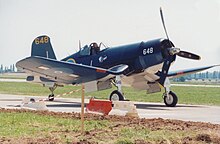Mara has restricted commenting on wars we didn't fight in. My Dad was in the Pacific. I have posted an article and highlighted some of the article in red.
It appears the Mother country could not help New Zealand so the US stepped in and helped. Mara not my comment the articles comment.
http://en.wikipedia.org/wiki/Military_history_of_New_Zealand_during_World_War_II
The RNZAF in the Pacific
The presence of German raiders led to the formation of New Zealand based air-combat units — initially using re-armed types like the
Vildebeest, and hurriedly converting impressed airliners such as the DH86 to carry bombs. RNZAF obtained
Lockheed Hudsons early in 1941 to take over this role. 5 Squadron with
Vickers Vincents and
Short Singapores was sent to Fiji to protect that colony.


Flying boats of 5 Squadron RNZAF
In December 1941 Japan attacked and rapidly conquered much of the area to the north of New Zealand. New Zealand had perforce to look to her own defence as well as help the "mother country". Trainers in New Zealand such as the North American Harvard, Hawker Hind and even the de Havilland Tiger Moth were camouflaged and armed. Hudsons moved forward, while 5 Squadron in Fiji, commenced operations against the Japanese despite its obsolete equipment.
The Imperial Japanese Navy demonstrated the vulnerability of New Zealand when submarine-launched Japanese float-planes overflew Wellington and Auckland (where a Tiger Moth gave chase ineffectually[citation needed]) in March and May, 1942. As few combat-capable aircraft were available at home, and Britain was unable to help, so New Zealand turned to the United States and signed a lend-lease agreement. Gradually at first, America was able to supply New Zealand with aircraft for use in the Pacific Theatre.
The early lend-lease aircraft, obsolescent models, had difficulty holding their own against the skilled and well-equipped Japanese pilots, but as soon as pilots had mastered the lend-lease aircraft, they went into action.

 Restored RNZAF Corsair
Restored RNZAF Corsair
From mid-1943 at
Guadalcanal, starting with
No 15 and
No 14 squadrons, several
Kittyhawks units fought with distinction. Several RNZAF pilots became aces against the Japanese, including
Geoff Fisken, the Commonwealth's leading ace in the Pacific war. Other squadrons flew the elderly but effective
Douglas Dauntless and later the big, modern
Grumman Avenger torpedo-bomber.
The RNZAF took on a major part of the maritime reconnaissance task too, with
Catalina (and later
Sunderland) flying-boats and Hudson bombers.
The role of the RNZAF changed as the allies moved off the defensive. The Americans, prominent amongst the Allied nations in the Pacific, planned to bypass major Japanese strongholds, but instead to capture a handful of island bases to provide a supply-chain for an eventual attack on Japan itself (see
island hopping). The Allied advance started from the South Pacific. The RNZAF became part of the force tasked with securing the line of advance by incapacitating the bypassed Japanese strongholds.
As the war progressed, more powerful modern aircraft replaced the older types; Kittyhawks gave way to
Corsairs and Hudsons to
Venturas. At its peak in the Pacific, the RNZAF had 13 squadrons of Corsair fighters, six of Venturas, two each of Catalinas and Avengers, two of
C-47 Dakotas, one using Dauntless dive bombers, mixed transport and communications squadrons, a flight of
Short Sunderlands and nearly 1,000 training machines. By 1945 the RNZAF had over 41,000 personnel, including just over 10,000 aircrew who served with the RAF in Europe and Africa.




